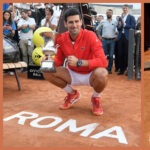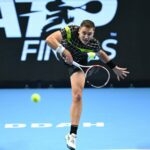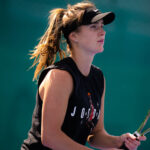‘I never stop a mark unless I’m 100% sure’ – Rune gives his verdict on clay-court ball mark controversies
Holger Rune says he does not mind having umpires and line judges calling the shots, so long as accuracy can be maintained

In his short stint so far as a household ATP name, Holger Rune has never been one to shy away from controversy.
Far from deliberately seeking controversies out, the young Dane simply does not feel the need to stay quiet if he believes something should be said.
This was evident in his superb quarter-final victory over Novak Djokovic at this year’s Italian Open, when he made his case to chair umpire Mohamed Lahyani about an erroneous line call in the second set – a call which ultimately cost Rune his serve.
“I never stop a mark unless I’m 100% sure. I was 100% sure. Apparently I was right because I saw the Hawk-Eye after the match and it was out,” the Dane said in his post-match press conference.
Line calling controversies at Italian Open
With every new season of clay-court tennis comes another set of controversial line calls. This year has been no different.
The debate around introducing line-calling technology has been brought sharply back into focus in recent weeks as several high-profile line calls have gone against where technology deemed the ball to have landed. Nowhere was this more starkly illustrated than in Rune’s match against Djokovic.


“I see the ball out, he saw it in. I saw on the Hawk-Eye after that the ball was out, so I don’t know,” Rune said after the match.
When asked whether he is looking forward to the day that electronic line calling replaces line judges, the Dane said, “I don’t mind that it’s like this with line umpires judging. Most of the time – almost all the time – they’re super accurate.
“This is the umpire’s decision. There was obviously many cases with Mohamed that make mistakes. Also I heard in the first match with Murray, I heard something mistakes.”
Italian Open to have electronic line calling by 2025
The ATP have recently announced that all tour events are to have electronic line calling by 2025, something which many tournaments already fully implement, including at the US Open and the Australian Open.
For other tournaments, the compromise of the challenge system has worked well. Clay-court tennis, however, faces a bigger shock to the system when electronic line calling becomes mandatory.
Only at the Madrid Open this year was technology used on clay to assist with line calls.
Concerns about hawk-eye’s accuracy on a surface that is not universally flat have been alleviated with the emergence of a rival technology, Foxtenn, which provides an actual camera reply of the ball hitting the court.
But still, most clay-court tournaments resist, insisting that relying on the ball mark alone for close calls is sufficient.
That seems a difficult argument to stand behind when faced with the number of erroneous calls made during the clay-court stretch this year.
Or, as Holger Rune put it, “It’s just about how you read the mark. Obviously he [the umpire] reads the mark wrong sometimes.”



People in this post
More tennis news
Next Gen Finals, Serbia, Djokovic: Everything you ever wanted to know about Hamad Medjedovic (but never had time to find out) – updated after 2025 Marseille Open final

Dubai, France, finals streak – Everything you always wanted to know about Ugo Humbert (but never had time to find out) – updated after 2025 Marseille Open title

Dubai Open: Raducanu ends losing run with victory over Sakkari, moves into second round

Humbert defeats Medjedovic to retain Marseille Open title

Dubai Open: Svitolina dismantles Kalinskaya to reach second round


